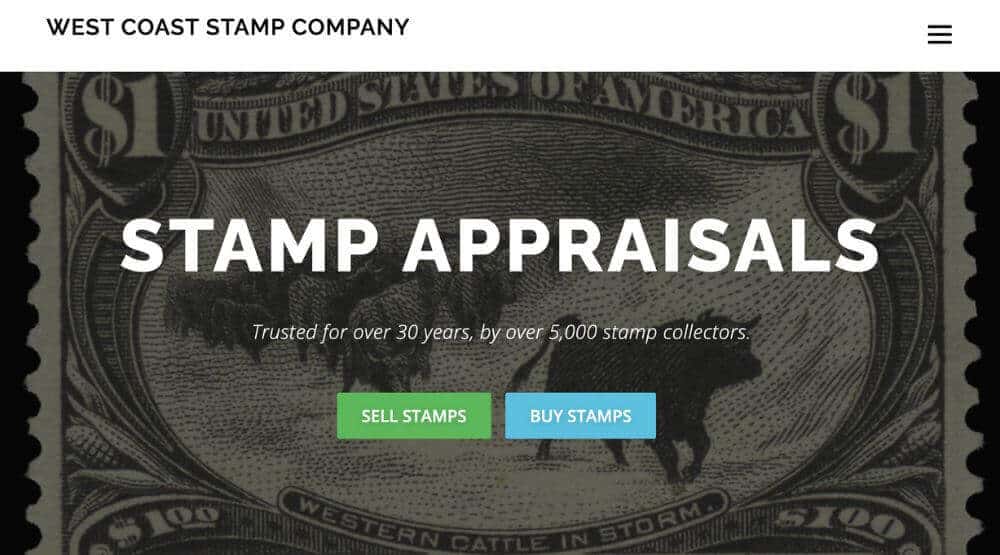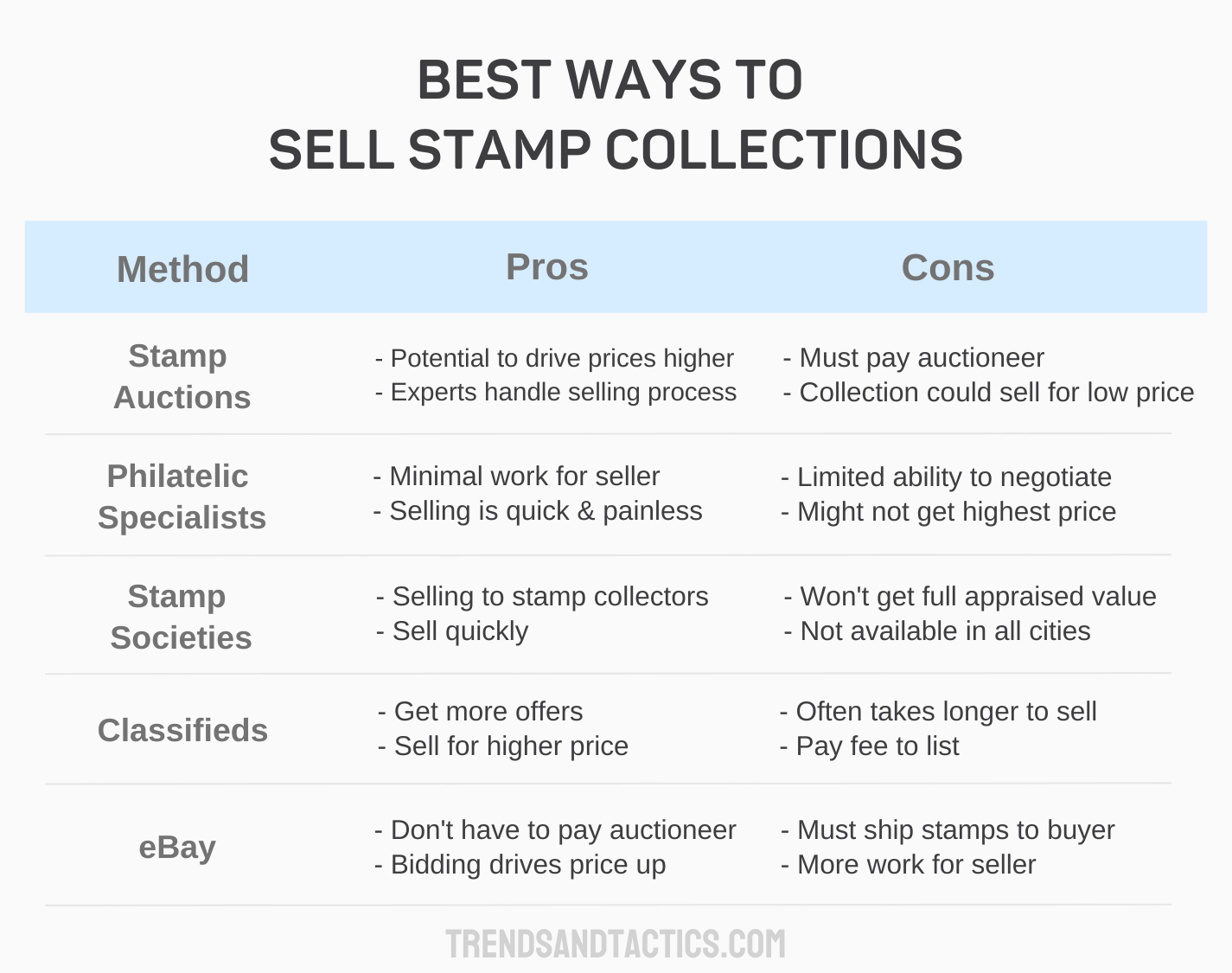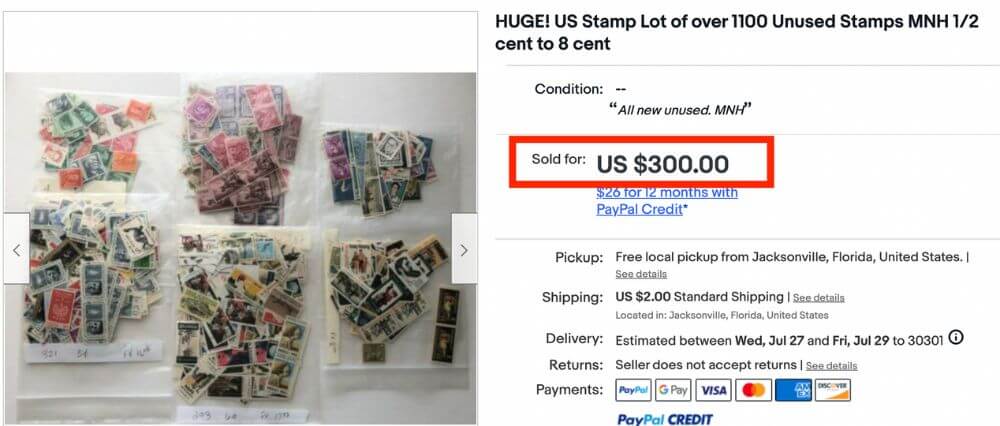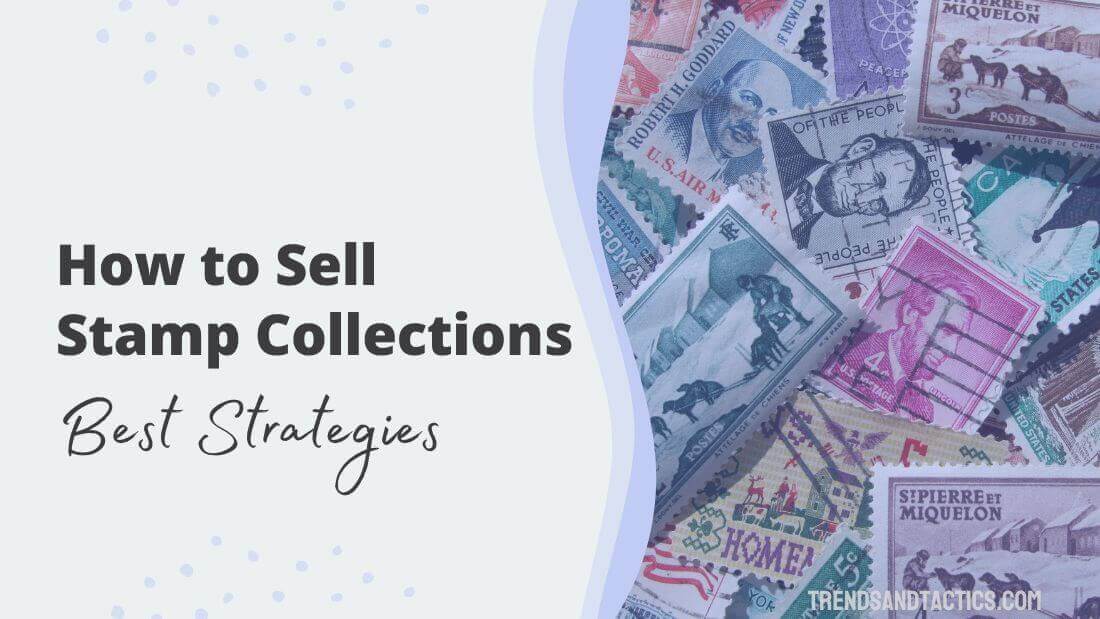Whether you’re a stamp collector ready to cash in, or you’ve inherited some old stamps, you might feel overwhelmed when it comes to how to sell a stamp collection.
Selling stamp collections isn’t terribly difficult, but it starts with knowing what you’re working with. We’ll cover how to appraise your collection, and the best ways to sell it so you maximize your earnings.
Appraising Your Stamp Collection
Properly appraising your collection is the most vital part of the process. If you’re a lifelong stamp collector, you probably have a general idea of your stamp portfolio’s value. However, if you’ve inherited a collection, you might need some more help.
Believe it or not, stamps are one of the best investments you can make, but only if you know which stamps are collectable and how to sell for top dollar. These are the best strategies.
Skip Catalog Values
Many people make the mistake of relying on catalog value alone to price stamps.
If you’re only using the catalog value, you’ll either sell your stamp collection significantly below market value, or you’ll end up with no buyers because the collection is overpriced.
Catalog values are almost never the same as the appraised value, and few collectors or buyers pay attention to the catalog value when buying stamp collections.
Accurate Valuations
Appraisers use 2 types of valuation methods for stamp collections – fair market value or retail replacement value.

Fair market value is simply the price at which they believe you can sell your collection, based on their experience and historical sales figures.
Meaning there can be some variation with this valuation method depending on the appraiser.
Retail replacement value is the price you would pay if you went into the retail market to replace the item in question. It’s almost always going to be different from the fair market value.
Fair market value is used in estate and donation appraisals. If you’re selling the stamp collection, this is the value you want to use as a reference. Retail replacement value is used primarily by insurance companies.
So, it’s good to have your collection appraised for its retail replacement value, but this isn’t the number you’ll use when selling the collection.
Organize Your Collection
Before you schedule your appraisal, or at least before the date of the appraisal, you need to organize your collection as much as possible. Most stamp collections are woefully disorganized, making the appraisal process more time consuming and difficult.
The appraiser is going to organize your collection if you don’t, which means more of their time on their clock.
At the least, for each book, album, binder, etc create a brief description of what each contains. Make notes of rare or unusual items. This prep work will help expedite the appraisal process.
The Appraisal Process
- Find a qualified appraiser that is USPAP certified (Unified Standards of Professional Appraisal Practice). These standards were developed by the Appraisal Foundation, which is a body of the US Government. Qualification must be renewed every two years. An appraiser with these qualifications will be reliable and accurate in their appraisal of your stamp collection.To ensure that your appraiser is properly qualified, contact the Appraisers Association of America, and they will help you find an appraiser.
- Once you’ve found an appraiser, you’ll need to get aligned on their fees and deliverables. Most appraisers base their fees on an hourly rate which is specified in their contract.
- Next, the appraiser is going to have to inspect your collection in person. The condition of the stamps is a major factor in determining their value, so they can’t accurately determine the value of your collection through pictures. During the process, they should provide at least three comps (or comparable values) for each stamp. These are sales of comparable stamps which help establish and justify the value the appraiser is assigning to your collection.
- Once they have examined and appraised your entire collection, they will supply you with an appraisal report. This will include a valuation section, which tells you the appraised value of your collection, and an analysis section providing the appraiser’s rationale for the values given.
Bear in mind that an appraisal is inherently a backward-looking process. It doesn’t project the future value of your collection, but instead states the current value based on past market trends.
Your collection could increase or decrease in value as time goes on, and if it’s been a few years since you’ve had your collection appraised, you’ll probably need re-appraisal.
Estimating the Value of Your Collection
Unfortunately, getting a qualified appraiser to look at your collection is difficult right now. Many simply aren’t willing to travel, and the safety and sanitization precautions required to safely appraise your collection are tedious.
It is possible for you to appraise your own collection and potentially come up with a decent value estimation.
This wouldn’t be acceptable for insurance or IRS purposes, so if you’re selling a collection as part of an estate, you’ll need to get connected with a qualified appraiser.
If you’re selling your own collection and don’t need to worry about the IRS, self-appraising is an excellent idea.
To do this, you will need to to check the following details for each stamp in your collection:
- Identify the stamp
- When the stamp was issued
- The material used to make it
- Determine the centering of the design
- Check the stamp’s gum
- Determine the condition of the perforations
- See if the stamp is cancelled or not
- Determine stamp rarity
- Determine if the stamp has any interesting and traceable history
Stamps are graded as sound (no imperfections), faulty (minor imperfections), or defective (major imperfections). Each of these grades is further divided into seven categories: extremely fine, very fine, fine, good, average, fair, and below average.
Check Stamp Values Online
Auctions sites, stamp dealers, and stamp collector forums are all excellent places to find information on the value of your stamps.
One of the easiest ways to do this is to use auction sites to find recent sales of stamps similar to the ones in your collection. In fact, qualified appraisers commonly judge the value of stamps this way as well.
StampWorld is an online catalog that provides values for stamps, both new and old. It’s especially popular among people appraising their own collections.
While the values listed here will be more accurate than other catalog values, they still won’t necessarily reflect the true value of your stamps.
Stamp auction sites and forums are the best places to go.
Auction sites will show true market values, and forums let you ask other collectors questions about rarer or unusual stamps. Together, these methods will help you best determine your stamp’s value.
Best Ways to Sell Your Stamp Collection
Once you have a solid idea of the actual value of your collection, it’s time to list it. There are several ways to do this, but these are the ones we recommend.

Stamp Auctions
Look for auctioneers who specialize in stamps (philatelic auctioneers). They’ll be able to find buyers willing to pay the best prices for a valuable collection.
Pros:
- Auctions have the potential to drive the price of your collection very high
- Professional auctioneers can maximize your earnings and minimize the hassle of selling
- You can let the experts handle the pricing
Cons
- You’ll have to pay the auctioneer
- Bidding often starts at less than the appraised value, and there’s a chance it never goes above that value
Philatelic Specialists
There are companies that buy stamp collections outright. Many of these, like Apfelbaum, have been in business a long time and have impeccable reputations in the stamp collecting community.
Pros
- These companies often have their own appraisers, so one less thing for you to do
- Selling is a quick and painless
Cons
- You might not get as much money from these sales
- You won’t be able to negotiate price as easily
Stamp Societies
Groups like the US Philatelic Classics Society have their own dealers who buy and sell stamps.
Pros
- You’ll be selling to people who love stamps
- Sales can be done quickly
Cons
- You won’t get the full appraised value of your stamps, unless the dealers believe they can sell it for more down the road
Classifieds and Catalogs
Groups like the National Stamp Dealers Association have their own magazines and catalogs through which stamps are sold. You can easily list your collection on these platforms.
Pros
- These ads are seen by people who buy stamps for their own collection, not resale, so you’ll get a good price
- You’ll get multiple offers for your collection
Cons
- It make take a long time to sell your collection
- You’ll probably have to pay to list your collection
eBay
eBay can be a great way for you to sell your stamp collection yourself, so you can keep more money in your pocket.
Pros
- You don’t have to pay an auctioneer
- Bidding can drive the price up very high
Cons
- Bidding may never reach the real value of your collection
- You may have to pay for shipping
3 Tips to Increase Your Stamp Collection Payout

Have your collection professionally appraised
It may be tempting to appraise the collection yourself, but if you really want to maximize your payout, it’s better to hire a professional.
They have years of expertise, and their appraisal will be more accurate.
If you can show potential buyers that the collection has been professionally appraised as well, they’re more likely to pay the asking price.
Don’t Sell the Whole Collection at Once
Selling the entire collection means a quicker payout, but you’re likely to get more money if you sell pieces of the collection to different collectors.
If each collector is only buying a few stamps, they’ll be willing to spend more money. This may take longer, but it’s a solid strategy for maximizing your payout.
Sell on Consignment
If you don’t want to handle the sale on your own, selling on consignment is one of the best ways to offload the hard work.
While a stamp dealer typically pays below market value, a consignment seller collects a fee based on a percentage of the final sale price. Therefore, it’s in their best interest to sell the collection for as much as possible, so you’ll likely come out ahead.
Rare Stamp Collection Facts
1. There are several famous stamp collectors
Queen Elizabeth II, FDR, John Lennon, and Amelia Earhart were/are all avid stamp collectors. The Queen maintains one of the most valuable stamp collections in the world, which was started by her grandfather.
2. Shakespeare on a Stamp
William Shakespeare is the first non-Royal to ever appear on a British postal stamp. These stamps were made in 1964 to commemorate his 400th birthday.
3. One of the Most Successful Stamps is Also a Failure
In 2009, the Simpsons stamp collection, featuring four designs, was released. It was an immediate hit, with 318 million copies sold. That makes it one of the most popular stamps of all time, but there was a problem.
The USPS printed nearly a billion of these stamps, which was far too many. They lost a little over a million dollars on the collection.
Wrapping Up
Stamps are an excellent long term investment, and selling your stamp collection can be a great way to make some serious money.
Fortunately, selling a stamp collection and making money off it is easier than many people realize.
You’re now equipped with all the information needed to sell your collection and maximize your payout, so don’t be afraid to list it today!
Jack Brewer is passionate about all things personal finance, and enjoys testing out new side hustles and investing strategies.






